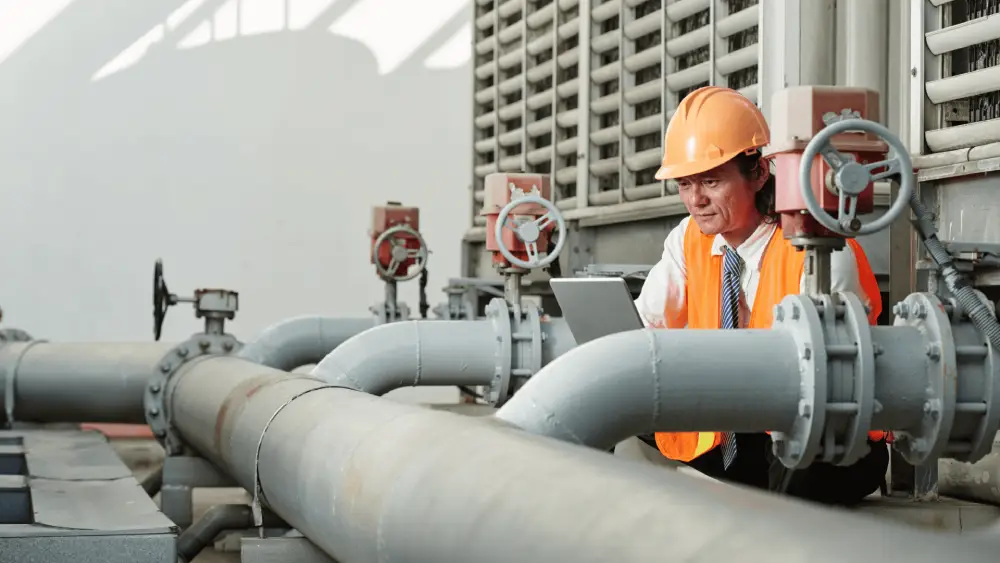In both healthcare and hospitality settings, plumbing systems do much more than deliver water—they directly influence safety, hygiene, and comfort. Whether it’s a hospital’s sterile operating suite or a luxury hotel’s spa, plumbing engineering plays a crucial role in ensuring smooth operations, water conservation, and user satisfaction.
Designing plumbing systems for these facilities is far more complex than for standard commercial buildings. Each has specialized requirements, strict regulations, and zero tolerance for downtime. Let’s explore key plumbing engineering tips that help professionals design efficient, compliant, and sustainable systems for healthcare and hospitality environments.
Understanding the Unique Demands Of Plumbing Engineering
Healthcare Facilities
Hospitals and medical centers require highly reliable, sanitary plumbing systems to support patient care and infection control. Plumbing Engineers must consider:
- Continuous hot and cold water supply
- Backflow prevention to avoid contamination
- Specialized systems for medical gases and sterilization equipment
- Safe and quick drainage systems to manage medical waste water
Hospitality Facilities
Hotels, resorts, and restaurants focus on comfort and experience. Plumbing systems here must deliver consistent performance—maintaining water pressure, temperature, and cleanliness across hundreds of fixtures and guests simultaneously. Both industries rely on durability, redundancy, and energy efficiency, but the way those goals are achieved varies significantly.
Common Challenges in Plumbing Design
Before diving into solutions, it’s essential to recognize the challenges engineers face in these sectors:
- High demand variability: Hospitals operate 24/7, while hotels have peak usage during mornings and evenings.
- Stringent sanitation standards: Especially in healthcare, even minor contamination can lead to health hazards.
- Water temperature control: Both sectors require precise control to prevent scalding or bacterial growth.
- Space and accessibility limitations: Plumbing must often fit into tight, concealed areas without compromising maintenance access.
- Regulatory compliance: Codes such as ASHRAE 188 (for Legionella control) and Uniform Plumbing Code (UPC) must be strictly followed.
Addressing these challenges begins with thoughtful engineering design.
Plumbing Engineering Tips and Best Practices
1. Prioritize Water Safety and Quality
Waterborne pathogens like Legionella can thrive in poorly managed systems. Plumbing Engineering should:
- Maintain hot water above 124°F (51°C) and cold water below 68°F (20°C).
- Include thermal disinfection cycles or chlorine dioxide treatment systems.
- Design piping to prevent stagnation, using looped circulation instead of dead-end runs.
2. Use Zoning and Pressure Balancing
Large facilities need consistent pressure across multiple floors and wings. Employ pressure zones and booster pump systems to maintain balance, especially in high-rise hotels or hospitals.
Install pressure-reducing valves (PRVs) to prevent fixture damage and improve system efficiency.
3. Plan for Redundancy
In healthcare, even a short plumbing outage can disrupt critical care. Systems should include redundant pumps, dual water heaters, and emergency water storage tanks to ensure uninterrupted operation.
4. Optimize Hot Water Systems
Hospitals and hotels consume large volumes of hot water daily—for showers, cleaning, and sterilization. To optimize performance:
- Use heat recovery units to capture waste heat from condensate or greywater.
- Employ tankless water heaters or modular systems for scalability and efficiency.
- Integrate smart controls for real-time temperature monitoring and demand management.
5. Incorporate Water Conservation Features
Sustainability is now a standard expectation. Incorporate low-flow fixtures, sensor-based faucets, and dual-flush systems to minimize water use without sacrificing performance.
In hospitality, water-efficient design also enhances brand reputation and reduces operating costs.
Key Design Elements by Facility Type
Below is a quick reference table highlighting the distinct plumbing requirements for healthcare and hospitality buildings.
| Aspect | Healthcare Facilities | Hospitality Facilities |
|---|---|---|
| Water Quality Control | High priority; requires disinfection systems and backflow prevention | Moderate; relies on centralized filtration for guest satisfaction |
| Hot Water Supply | Critical for sterilization and hygiene; redundant heating systems recommended | Essential for comfort; large-capacity water heaters or on-demand systems used |
| System Redundancy | Mandatory for critical operations; includes backup pumps and tanks | Preferred for continuous guest service but less critical than in hospitals |
| Drainage Systems | Specialized systems for biohazard and waste water | Standard drainage with grease traps for kitchens and laundry areas |
| Water Conservation | High-efficiency fixtures plus medical-grade filtration to minimize waste | Focus on sustainability certifications (LEED, WELL) and reduced usage fixtures |
| Maintenance Access | Frequent inspections required; easily accessible plumbing zones | Discrete access points to maintain guest experience |
6. Plan for Maintenance and Monitoring
Both sectors benefit from smart plumbing monitoring systems that track flow rates, temperature, and water quality in real time.
These systems:
- Detect leaks instantly
- Send maintenance alerts to facility teams
- Help identify inefficiencies or abnormal consumption patterns
Predictive maintenance reduces water waste, prevents equipment failure, and ensures long-term reliability.
7. Comply with Codes and Standards
Plumbing engineering design must meet multiple standards such as:
- ASHRAE 188 – Legionella prevention
- Uniform Plumbing Code (UPC) or International Plumbing Code (IPC)
- ADA Accessibility Guidelines for fixture heights and placement
- Local health department regulations for sterilization and drainage
Staying updated on evolving codes ensures both safety and compliance for new and retrofit projects.
The Budlong Perspective
At Budlong, we understand that plumbing engineering in healthcare and hospitality is about more than pipes and pumps—it’s about protecting people, ensuring comfort, and maintaining operational excellence.
Our engineers design systems that blend efficiency, reliability, and compliance, leveraging smart technology and sustainable design principles. Whether it’s a multi-wing hospital or a 500-room luxury hotel, Budlong ensures that every drop of water serves its purpose safely and efficiently.
Conclusion
Healthcare and hospitality facilities demand plumbing systems that are safe, resilient, and sustainable. By integrating redundancy, water conservation, and intelligent controls, engineers can design systems that meet today’s high expectations—and tomorrow’s stricter regulations.
As building technology continues to evolve, smart, sustainable plumbing design will remain the foundation of reliable facility operations—keeping patients safe, guests comfortable, and businesses running smoothly.

